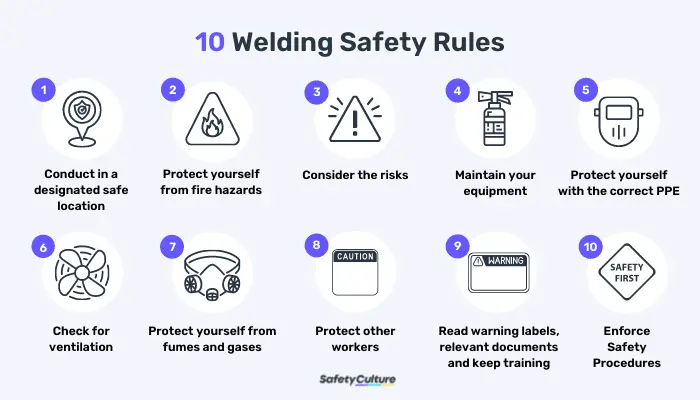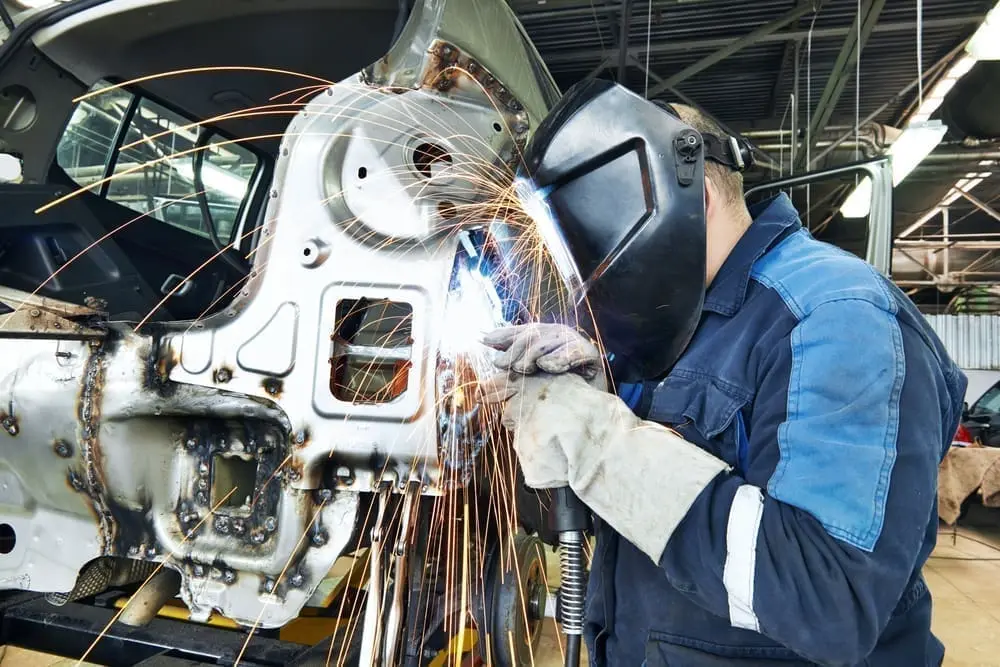What are Welding Safety Rules?
The Occupational Safety and Health Administration (OSHA) outlined specific requirements for welding, cutting, and brazing in 29 CFR 1910 Subpart Q.While their implementation may be dependent on the context of the company, consider starting to apply these welding safety rules below in daily business operations.
Follow These 10 Safety Rules for Welding

1. Conduct welding in a designated safe location
A welder should observe their surroundings or working environment prior to welding. It is best to observe whether any flammable equipment or materials are present within the vicinity of the welding area. The considered safe distance from the welding area is 35-feet(10 meters). If the object to be welded or cut cannot readily be moved, a work around OSHA recommended is to transfer movable fire hazards away from the welding area.
2. Protect yourself from fire hazards
If all the fire hazards cannot be removed, then appropriate safeguards should be in place to protect the immovable fire hazards and to confine heat, sparks, and hot slags that are produced by welding.
3. Consider the risks
There are various risks associated with welding, most of which pose health hazards (e.,g exposure to fumes and UV radiation). Welding risks may vary depending on the area where it will be done, so it is recommended that a risk assessment be carried out prior to work. This will help in setting up controls to manage or eliminate the risks. Otherwise, no welding and cutting work should be permitted.
4. Maintain your equipment
A welder or helper working on platforms, scaffolds, or runways shall be protected against falling by the use of railings, safety belts, life lines, or some other equally effective safeguards. Welders shall place welding cable and other equipment so that it is clear of passageways, ladders, and stairways.
5. Wear appropriate PPEs at all times
Welders should always wear the appropriate PPE to safeguard against hazards that can cause physical injury or illness. Some examples of PPE that welders should wear are:
- Long-sleeved shirts
- Long pants with no cuffs
- Welding helmet or goggles
- Respirators
- Ear muffs/plugs
- Boots & gloves
6. Ventilate the welding area
Another means of preventing welding incidents and protecting employees is proper ventilation. Ventilation is mainly used for removing air contaminants from a worker’s work area, preventing the accumulation of flammable or combustible gases or vapors, and preventing oxygen-rich or oxygen-deficient atmospheres.
7. Protect yourself from fumes and gases
Local exhaust or general ventilating systems shall be provided and arranged to keep the amount of toxic fumes, gases, or dust below the maximum allowable concentration. If necessary, welders should wear a respirator to protect themselves from breathing in harmful substances.
8. Provide warnings for other workers
After welding operations are completed, the welder shall mark the hot metal or provide some other means of warning other workers.
9. Read warning labels and relevant documents, and keep training
Ensure that each welder has access to labels on containers of such materials and safety data sheets and is trained when new equipment and techniques are adopted.
10. Enforce safety procedures
Hold yourself and those around you accountable when it comes to following safety guidelines. Report any safety violation activities in the best interest of you and those you share a workspace with.
Improve your EHS Management
Cultivate a safe working environment and streamline compliance with our EHS solutions.
Explore nowSafetyCulture Marketplace: Your One-Stop Work Gear & Equipment Shop
Improve safety in your workplace with SafetyCulture Marketplace as your one-stop shop for all work gear and equipment needs. Get on-demand access to top quality and specialized work gear from trusted equipment brands in the industry—all in one centralized location. Raise the bar of safety and efficiency by empowering employees to request what they need with just a few taps, anytime and anywhere!



